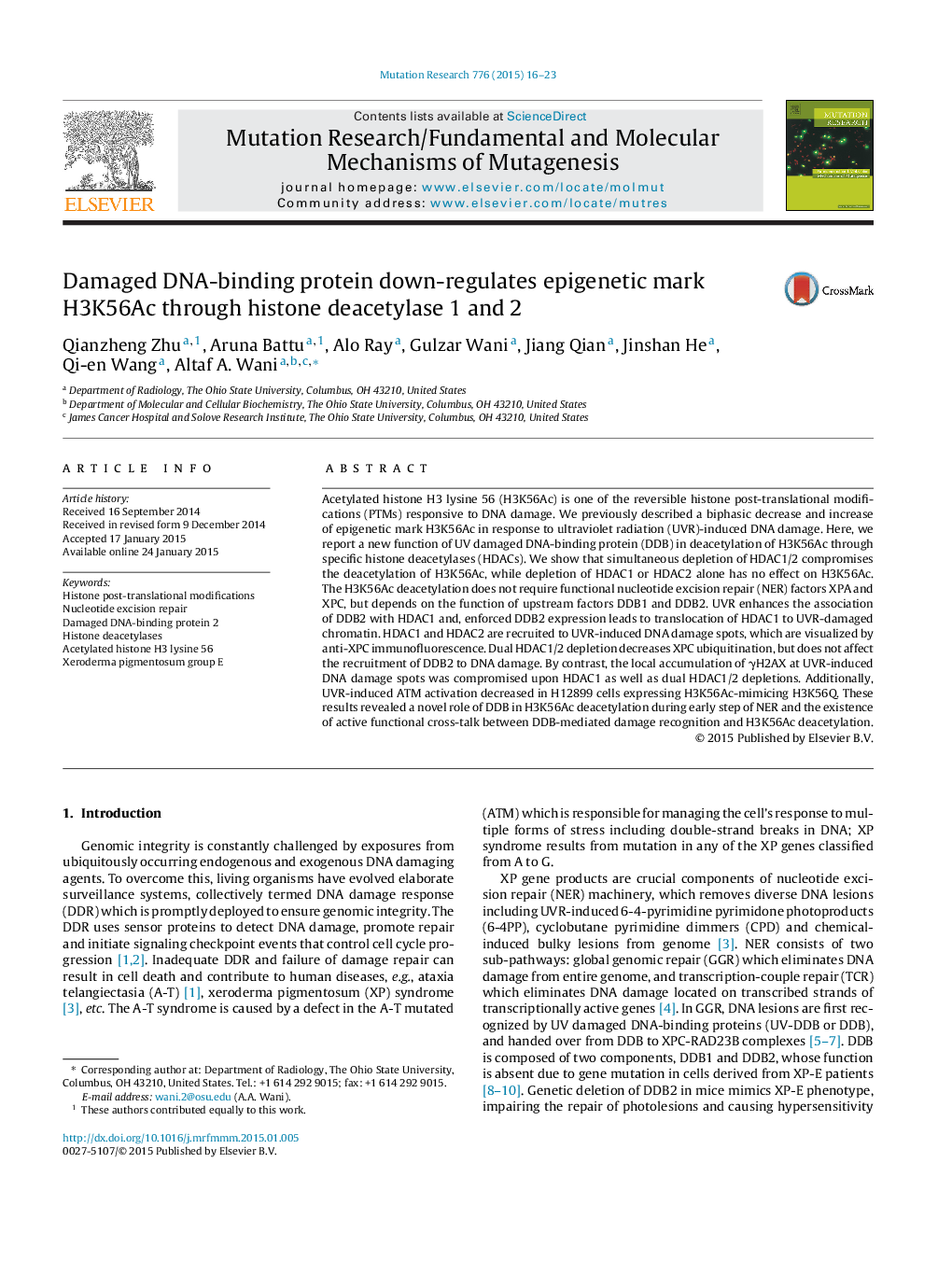| Article ID | Journal | Published Year | Pages | File Type |
|---|---|---|---|---|
| 2146258 | Mutation Research/Fundamental and Molecular Mechanisms of Mutagenesis | 2015 | 8 Pages |
•HDAC1 and HDAC2 co-localize with UV radiation-induced DNA damage sites.•HDAC1 translocation to chromatin is dependent on DDB2 function.•HDAC1 and HDAC2 are involved in H3K56Ac deacetylation.•H3K56Ac deacetylation requires DDB1 and DDB2 but not XPA or XPC functions.•HDAC1/2 depletion decreases XPC ubiquitination and local γH2AX accumulation.
Acetylated histone H3 lysine 56 (H3K56Ac) is one of the reversible histone post-translational modifications (PTMs) responsive to DNA damage. We previously described a biphasic decrease and increase of epigenetic mark H3K56Ac in response to ultraviolet radiation (UVR)-induced DNA damage. Here, we report a new function of UV damaged DNA-binding protein (DDB) in deacetylation of H3K56Ac through specific histone deacetylases (HDACs). We show that simultaneous depletion of HDAC1/2 compromises the deacetylation of H3K56Ac, while depletion of HDAC1 or HDAC2 alone has no effect on H3K56Ac. The H3K56Ac deacetylation does not require functional nucleotide excision repair (NER) factors XPA and XPC, but depends on the function of upstream factors DDB1 and DDB2. UVR enhances the association of DDB2 with HDAC1 and, enforced DDB2 expression leads to translocation of HDAC1 to UVR-damaged chromatin. HDAC1 and HDAC2 are recruited to UVR-induced DNA damage spots, which are visualized by anti-XPC immunofluorescence. Dual HDAC1/2 depletion decreases XPC ubiquitination, but does not affect the recruitment of DDB2 to DNA damage. By contrast, the local accumulation of γH2AX at UVR-induced DNA damage spots was compromised upon HDAC1 as well as dual HDAC1/2 depletions. Additionally, UVR-induced ATM activation decreased in H12899 cells expressing H3K56Ac-mimicing H3K56Q. These results revealed a novel role of DDB in H3K56Ac deacetylation during early step of NER and the existence of active functional cross-talk between DDB-mediated damage recognition and H3K56Ac deacetylation.
